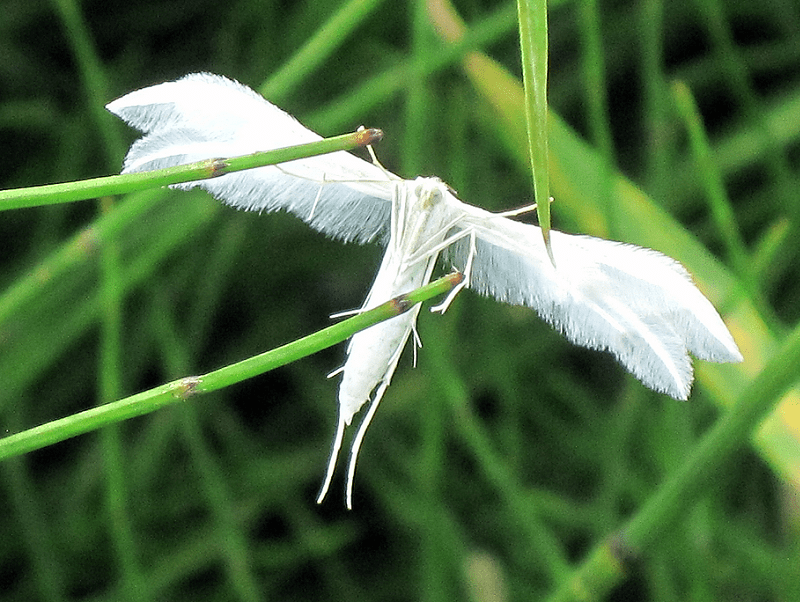Plume Moth Facts
- Plume Moth serves as the collective name for any of the approximately 1,000 Lepidoptera species within a uniquely evolved Family.
- Its common name derives from the extremely deep cleft divisions in its wings. We also think the white ones look like little ghosts but that’s material for another story.
- Typically, these insects rest on large-leafed plants during the daytime. Another unique adaptation is the behavior of their wings at this time.
- Most Lepidoptera will fold their wings against their bodies while at rest. This one, however, actually rolls its wings up into a lateral rod.
Plume Moth Physical Description
The various species of Plume Moth vary rather widely in exact appearance, yet similarities do remain. Each member species has a wingspan ranging from 0.25-2 in (6-50 mm).
The forewings typically consist of two slightly curved spars. These present numerous rough bristles. The hindwings of the Plume Moth display the same pattern, except for possessing three spars.
Not surprisingly, colors vary widely among the different species. However, shades of white and brown typically predominate.
- Kingdom: Animalia
- Phylum: Arthropoda
- Class: Insecta
- Order: Lepidoptera
- Family: Pterophoridae
Plume Moth Distribution, Habitat, and Ecology
The different varieties of Plume Moth live in most temperate to tropical climates. Also, the majority of these evolved as endemic to North America.
The larvae feed exclusively on the leaves and stems of various plants. The adults prefer the pollen and nectar of herbaceous plants.
Also, all known varieties possess a purely nocturnal nature. Some varieties have become considered an invasive species in some regions, while others have also been used as biological control agents.
Check out our other articles on 5 Magnificent Mammals of Greenland, North Atlantic Right Whale, Kangaroo Island, American Sweetgum, Sydney Funnel-web Spider

